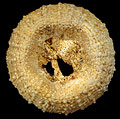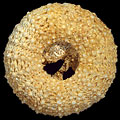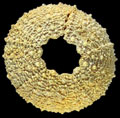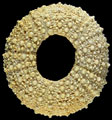The Echinoid Directory
Paradoxechinus Laube, 1869, p. 186
| Diagnostic Features |
|
|---|---|
| Distribution | Upper Eocene - Lower Miocene, Australia. |
| Name gender | masculine |
| Type | Paradoxechinus novus Laube, 1869, p. 188, by monotypy. Holotype Natural History Museum, Vienna 9024. |
| Species Included |
|
| Classification and/or Status | Euechinoidea; Camarodonta; Temnopleuroida; Temnopleuridae |
| Remarks |
|






